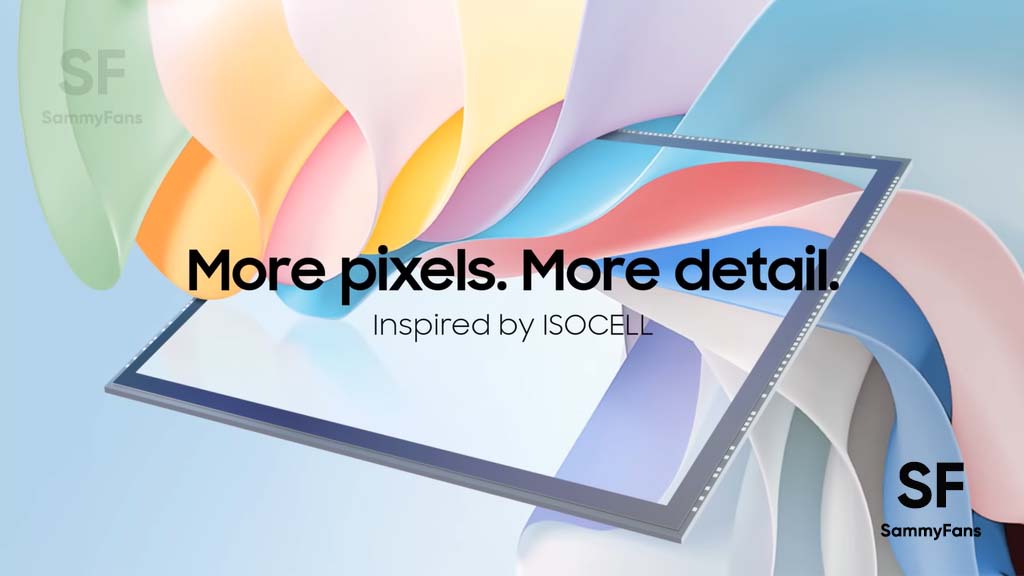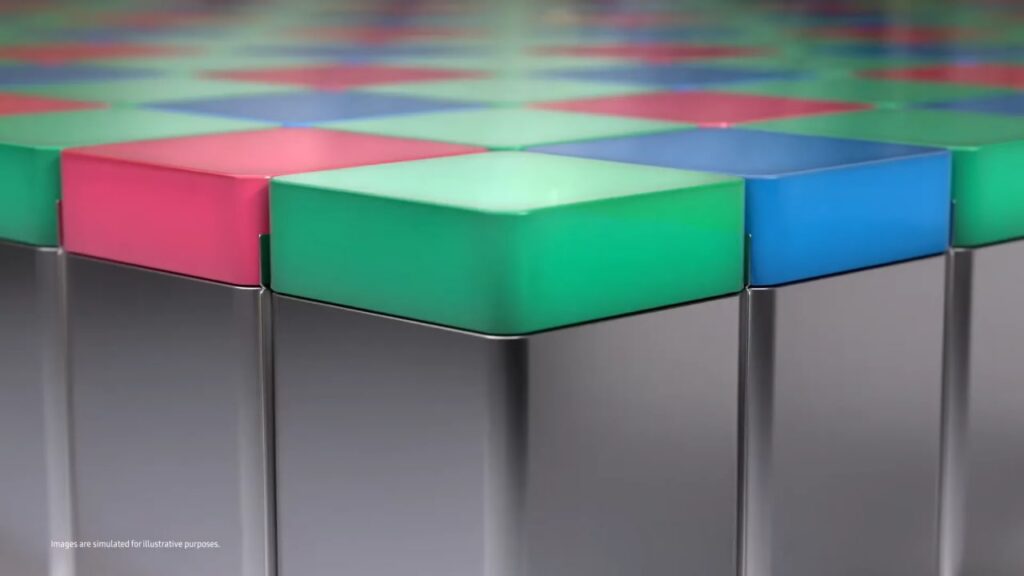News
Here’s how Samsung ISOCELL Camera evolved to make mobile photography advanced

Multiple smartphone brands nowadays use Samsung’s ISOCELL camera. These image sensors redefine digital imaging, revolutionizing mobile photography while providing secure mobility solutions. Recently, Samsung itself explained how the ISOCELL camera evolved to make mobile photography so advanced.
We save our memories through pictures and videos on smartphones but our phones carry limited storage and naturally, a smaller device requires pixels that make the image sensor behind each picture so tiny.
Join SammyFans on Telegram
At once, packing too many tiny pixels into each image sensor to ensure high quality leads to color crosstalk, which occurs when light leaks into adjacent pixels, and degrades the definition of images.
Follow Sammy Fans on Google News

Meanwhile, Samsung is solving this problem with its ISOCELL pixel technology. Samsung ISOCELL camera enables the smartphone to produce ultra-high-quality photos even in dark environments, taking mobile photography to next level.
Advancement of ISOCELL pixel technology: Improved image quality with greater light absorption –
Processing light is one of the most important parts when it comes to high-quality photos. Samsung’s ISOCELL pixel technology was introduced to process and absorb more light than its traditional BSI pixels. In fact, it has reduced color crosstalk between pixels by approximately 30% and increased overall efficiency where each pixel stores up to 30% more light.
Samsung continues to refine the technology, and to improve image quality even further, the new ISOCELL technology replaces the metal grid between the color filters with a more reflective material. This innovation helps reduce optical loss and increase light sensitivity.

By increasing light sensitivity, the smaller pixels in the sensor are able to absorb more light and brighter photos with even greater detail and less noise result. Whereas, to reduce optical loss in even smaller pixels, the company adopted a new merged grid array, which removed the grids between filters of similar chromaticity, thus increasing the light-absorbing area in each pixel.
The new ISOCELL solution also introduced a new material for the thin color filter to optimize the focus of the ultra-fine pixels. Recently, Samsung has advanced photosensitivity by improving the structure of the photodiode. These innovations in small-pixel technology allow ISOCELL to fully harness the power of micro-pixels.

Pixel Binning Technology: Experience crisp pictures even in dark conditions –
Due to the limitation of smaller pixel sizes, the light absorbed by such smaller pixels may be less. This presents a significant challenge when it comes to producing high-quality photos, especially in dark settings.
In the meantime, Samsung Pixel Binning technology allows smaller pixels to mimic larger pixels by combining some neighboring pixels into one. Samsung’s TetraPixel, NonPixel, and Tetra² pixel technologies merge four, nine, and sixteen pixels, respectively, to allow our smartphones to produce ultra-high quality photos, no matter the lighting conditions.

For example, when you take a photo in a dark environment, Tetra² pixel technology combines 16 pixels into one large pixel to capture more light for brighter images. Conversely, when it’s bright, the Re-mosaic algorithm rearranges the pixel array for higher image resolution, resulting in crisper, detailed images.
Of all the incredible capabilities of Samsung smartphones, one of the most notable is the ability to meet the growing demand for high-resolution photos. These lets users experience clear, detailed photos with small, yet powerful pixels through the ISOCELL mobile image sensor.

News
Samsung teases ‘Made for Germany’ free TV streaming!

Samsung launched the “Made for Germany” promotion TV program for residents in Germany. The company will be opening new TV opportunities in the country on July 1st. Thanks to the abolition of ancillary costs, Tenants will be allowed to choose which TV provider they want to use.
Under the “Made for Germany” TV promo, Samsung will offer an attractive streaming service for free. By purchasing a high-quality promotional Samsung device, customers will get up to 24 months of free access to first-class live TV and streaming content.
Those who choose a promotional device by July 31 will receive Telekom’s streaming program with Magenta TV and in some cases even Netflix and Disney+, for up to 24 months free of charge on top, depending on the promotional model.
Curtains up for the “Made for Germany” promotional devices: The Samsung 98-inch devices, such as the QN990C2, Q80C3, and the 2023 and 2024 QN90C/D.
Those who choose the QN990C, Q80C, or QN90C/D will also receive the Magenta TV offer including Disney+ and Netflix free of charge for 24 months.
There are RTL+ Max and Sportworld for 12 months each, 12 rental films via Maxdome, HD+/Sat and waipu.tv for 6 months, and Zattoo and qobuz for 3 months.

Image: Samsung Newsroom
Stay up-to-date on Samsung Galaxy, One UI & Tech Stuffs by following Sammy Fans on X/Twitter. You can also discover the latest news, polls, reviews, and new features for Samsung & Google Apps, Galaxy Phones, and the One UI/Android operating system.
Do you like this post? Kindly, let us know on X/Twitter: we love hearing your feedback! If you prefer using other social platforms besides X, follow/join us on Google News, Facebook, and Telegram.
News
Samsung’s storm busted Apple in India’s premium smartphone market

IDC recently published its report on India’s various smartphone segments. In particular, the premium smartphone market in India witnessed Samsung’s storm in the first quarter of the year. Meanwhile, Apple managed to survive but the margin was negligible.
According to IDC, Apple’s share declined YoY to 45%, while Samsung was a close second with a 44% share. The Galaxy maker had just 16% market share in the premium smartphone segment a year back. This rapid growth stunned the iPhone’s lead in India.
IDC analysts ranged premium segment between cost $600<$800. Models costing between was 2% overall shipments and declined by 21% in unit terms. During the first three months of 2024, key models were the iPhone 13, Galaxy S23FE/S23, iPhone 12 and OnePlus12.
The report mentions that India’s smartphone market shipped 34 million units in 1Q24. The country’s smartphone market grew 11.5% year-over-year, the third consecutive quarter in terms of growth. However, the super-premium segment is still dominated by Apple iPhones.
“Several new launches across multiple price segments happened during the quarter, coupled with increased promotional activities, particularly around premium offerings. Brands continued their focus on microfinancing schemes to drive affordability. eTailers organized several sales events and offered discounts on models nearing their end-of-life (EOL), resulting in increased demand and lean inventory,” said Upasana Joshi, Senior Research Manager, Client Devices, IDC India.
Stay up-to-date on Samsung Galaxy, One UI & Tech Stuffs by following Sammy Fans on X/Twitter. You can also discover the latest news, polls, reviews, and new features for Samsung & Google Apps, Galaxy Phones, and the One UI/Android operating system.
Do you like this post? Kindly, let us know on X/Twitter: we love hearing your feedback! If you prefer using other social platforms besides X, follow/join us on Google News, Facebook, and Telegram.
News
Apple, TSMC to be jealous: Samsung Galaxy Watch 7 adopts 3nm Exynos W1000

Samsung may be the first to debut a 3nm chipset on wearable devices. Apple and its chipset supplier TSMC may feel jealous as Samsung is expected to fuel the Galaxy Watch 7 series with an advanced Exynos W1000 processor, manufactured on a 3nm process.
Before applying 3nm to the Exynos 2500, Samsung is rumored to introduce 3nm-based Exynos W1000 with the Galaxy Watch 7 series. It’s a significant approach by the Korean tech giant over its archrivals Apple and Taiwan’s TSMC.
Samsung could commence operations of its 2nd-gen 3nm line in Korea in the second half. The fabrication site will likely mass produce a 3nm wearable chipset. The Exynos W1000 chip is slated to offer up to 20% improved computational performance and power efficiency.
Also Read | Samsung teases wearable revolution: Rectangular Galaxy Watch 7 Ultra, Ring?
The company’s next Unpacked event is scheduled for July this year. Alongside foldable phones and a new earbuds lineup, the Galaxy Watch 7 and Galaxy Ring would be introduced. This year’s smartwatch range may feature three different models.
Exynos 2500
Recently, it was revealed that the Exynos 2500 is preparing to be fabricated on a 3nm process. It isn’t surprising news as Samsung itself revealed this last year, the preparations are going well is a noteworthy development. Qualcomm may also introduce its first 3nm Snapdragon later this year.
Samsung Galaxy S25’s Exynos 2500 aims to crush Snapdragon 8 Gen 4
Stay up-to-date on Samsung Galaxy, One UI & Tech Stuffs by following Sammy Fans on X/Twitter. You can also discover the latest news, polls, reviews, and new features for Samsung & Google Apps, Galaxy Phones, and the One UI/Android operating system.
Do you like this post? Kindly, let us know on X/Twitter: we love hearing your feedback! If you prefer using other social platforms besides X, follow/join us on Google News, Facebook, and Telegram.












